![10 Things You Didn’t Know About Dog Trainers]()
by Laurie Schlossnagle | Mar 3, 2015 | Training Methods
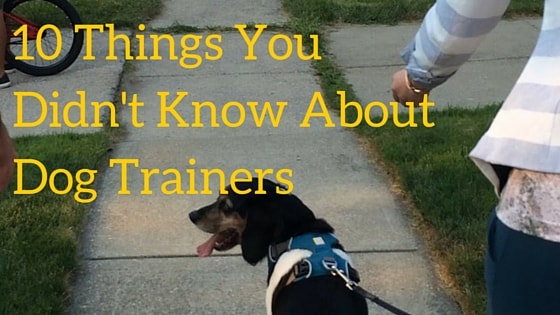
Here are 10 things you didn’t know about dog trainers:
1. Dog trainers love dogs – sometimes their humans not so much.
2. Dog trainers don’t like being asked at parties what to do about your dog eating his own poop (or insert any dog training dilemma “here”) any more than a doctor likes being asked about that suspicious bump.
3. Dog trainers see the good, the bad, and the ugly – and wake up to do it all again every day.
4. Dog trainers’ dogs are not perfect by any stretch of the imagination – we have the same struggles as every dog owner – please don’t expect perfection from our beloved dogs.
5. Dog trainers are human. We have our strengths and weaknesses, our passions and our “eh” moments.
6. Dog trainers have working hours, and non-working hours, just like any other profession.
7. That emergency training problem you have that was months, or maybe years developing? It is not going to be “fixed” on a Sunday evening at 9:00 p.m. for Monday morning.
8. When you don’t have money for dog training and want your dog trainer to give you a discount or a free session, we don’t pay our rent, our bills, or buy groceries. For many dog trainers, this is their livelihood, not just a “hobby.”
9. Do as your dog trainer says, not as s/he does.
10. When what you’re doing isn’t working, try doing what your dog trainer suggested.
Being a dog trainer takes a certain kind of person. They must love dogs, enjoy working with people, be self-motivated, and compassionate. We salute all dog trainers who pursue education and modern practices to improve their service to their community.
![10 Things You Didn’t Know About Dog Trainers]()
by Laurie Schlossnagle | Jan 20, 2015 | Training Methods
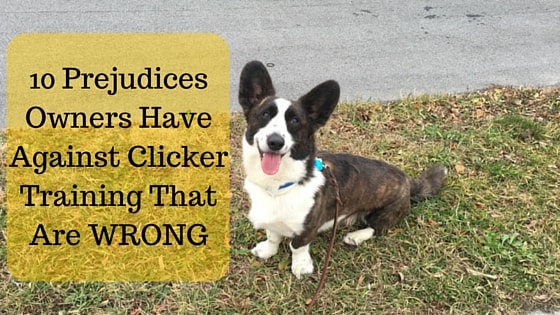
Clicker training does not mean you will never tell a dog “no.” Behaviors that are reinforced with a click/treat will repeat; behaviors that are ignored will go away. Ignoring behaviors and/or NOT clicking/treating is telling the dog “no, that’s not what I want.”
2. A Clicker Is Forever
Some people think, “I will have to carry a clicker and treats with me everywhere for the rest of my dog’s life.” Once the dog’s history of reinforcement for a behavior is built and the behavior is on stimulus control, the click/treat reinforcement is no longer as important. It is, however, important to remember that to maintain behaviors, reinforcement of the behavior should still occur.
3. It’s A Juggling Act
You need to have three hands (or more!) to clicker train. Practice clicker mechanics just like you practice “sit” and “down.” Get your leash, clicker, and some treats (candy or something rewarding for you) and practice without a dog (hence the treats for you!). Another way to practice is to have someone bounce a ball while you click/treat when the ball hits the ground.
4. It’s Bribery
Some people also think, “My dog will only listen to me when I have a clicker/treats.” Dogs will not do what they are asked to do until they have learned the cue and the behavior. Once dogs understand the cue and know the behavior, this is no longer an issue. Using proper clicker training mechanics is also an important part in preventing bribery – keep those hands out of the treat pouch!
5. It Isn’t Applicable To Other People
Do you want your dog to listen to someone else? Then have that person train with your dog. Or if what you want is a dog who will listen to a variety of people (vet tech, groomer, dog walker, etc.), have a variety of people train with your dog so that your dog gets used to listening to a variety of people. It is not about training method — it is about generalization and training in general.
6. A Classroom Full Of Clicking Will Confuse A Dog
Life is not lived in a vacuum and dog training is not done in a vacuum. Dogs pay attention to the whole picture – body language, verbalization, emotion, clicker, treats, etc. Your dog absolutely knows which click is for her.
7. Clicker Training Is Limited
You can train everything with a clicker – from sit to housetraining to dog sports to working dogs. Everything.
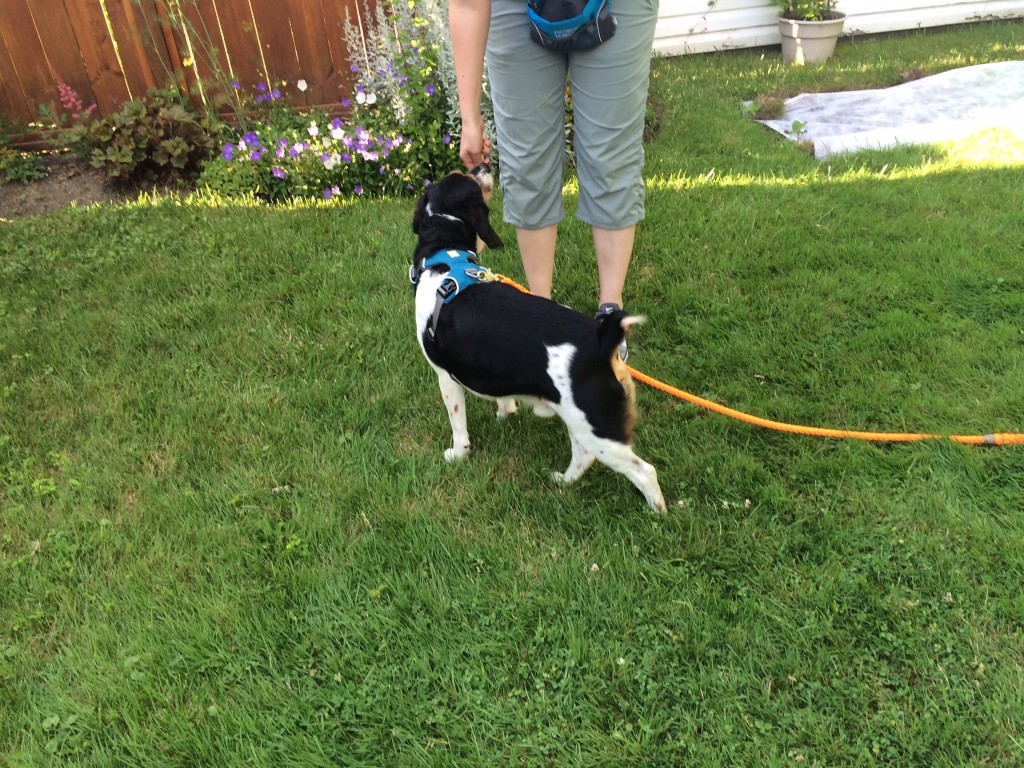
8. You Can’t Use A Clicker For Dog Sports Or Therapy Dog Work
Clickers are not allowed in the ring or on therapy visits (with many registering organizations/groups). But you can certainly utilize clicker training to train and prepare your dog for these things (remember it’s about history of reinforcement and stimulus control). Fortunately, you can utilize the clicker in your warm-up routine (at competitions it is polite and good trial etiquette to warm up outside or away from the ring(s) if you are using a clicker so as not to distract the working dog(s)).
9. Clickers Won’t Help With Reactive Or Aggressive Dogs
Using a clicker to work with a reactive or aggressive dog can be very calming for the dog. Once the dog understands that click means reinforcement, it helps the dog feel more comfortable and confident. They enjoy knowing that a click means the same thing in the training space, at home, on the street, alone, with other dogs, etc. A clicker increases comfort and confidence in reactive dogs because it consistently reinforces the behaviors they should do in a trigger situation while creating a positive association.
10. Sound Sensitive Dogs Hate Clicker Training
There are a number of different clickers with different levels of sounds for dogs and for humans. Experiment! If you can’t find a clicker that your dog is comfortable with, try a clicking pen, a canning lid, children’s toys – be creative. You can also put your clicker in your pocket or behind your back to quiet the sound a bit. Always be careful not to click too close to a dog, especially his ears.
Get Dog Training Business Tips!
Receive valuable dog training business tips and resources every week! Subscribe to The Modern Dog Trainer now by submitting your name and email below.
[mc4wp_form]
![10 Things You Didn’t Know About Dog Trainers]()
by Laurie Schlossnagle | Dec 19, 2014 | Training Methods
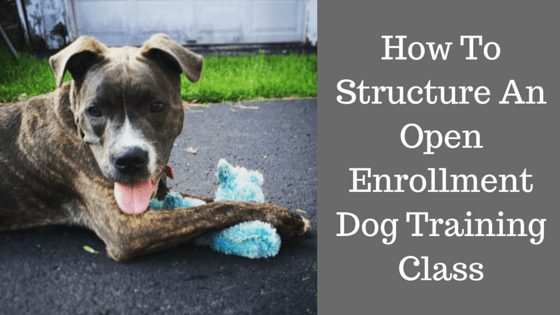
Open Enrollment Dog Training Classes
Open enrollment dog training classes are a big leap from traditionally scheduled and planned classes, but the conveniences they provide to our students are outstanding! Many students are looking for convenience in their classes and this concept can be a delightful change in your class schedule.
Set Up An Orientation Time For New Students
Orientation time can be a separate class time (for example: orientation is each week on Mondays at 6:00 p.m.), 15 – 30 minutes before each class, or a film a video you can send to new clients to watch before class. During orientation, cover topics such as clicker basics, classroom philosophy, and housekeeping items.
Create Your Schedule
Determine how often you want the class to “roll over” or begin again. Make a list of topics you want to cover in a typical series and how many classes it takes to include all of them (my classes “roll over” every six weeks). Also determine how many times each week you will offer the same class, adding to the flexibility factor of this structure.
Be Prepared To Have Students At Different Levels
Open enrollment classes mean that potentially every student in your class could be at a different level on the same exercise. Be prepared to address these different levels. Using the three D’s (duration, distraction, and distance) is helpful in preparing your classes to address the different needs of students at different levels.
Make Flexible, Open-ended Lesson Plans
Having flexible, open-ended lesson plans for each class gives you direction and purpose. It will make each class session more productive if you have goals set ahead of time.
Educate Your Current And Potential Students
Remember, this may be a new concept to your students, too! Explain your new class structure, outline the benefits, and show them how this will the flexibility will suite their needs.
Give It Time To Work
We have taught traditionally planned and scheduled classes for a long time. It’s going to take some time for you and your students to get used to this new concept. Give yourself time to settle into this new routine, but make sure your plan is clear to your clients to avoid miscommunication.
Comment below if you run open enrollment dog training classes and what you think of them!
Get Dog Training Business Tips!
Receive valuable dog training business tips and resources every week! Subscribe to The Modern Dog Trainer now by submitting your name and email below.
[mc4wp_form]
![10 Things You Didn’t Know About Dog Trainers]()
by Laurie Schlossnagle | Nov 24, 2014 | Training Methods
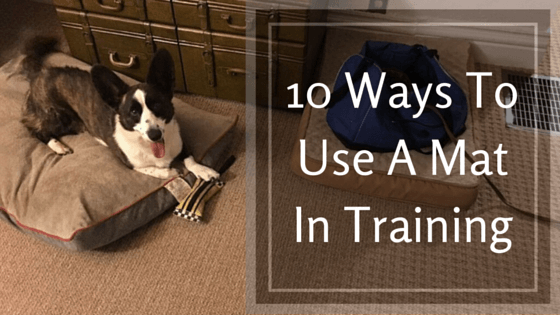
Excellent Reasons to Use a Mat in Dog Training
A mat, or a defined place for a dog to “go to,” is a versatile and useful behavior to teach a dog. A mat can be many things: a dog bed, a dog mat, a bath mat, a towel, a blanket, a pillow — whatever makes the most sense for the dog and the handler.
1. As A “Place” For The Dog
Useful in emergencies, when clients can’t put their dog in a crate, when they have dropped something, or when they need to vacuum. This gets the dog out of danger quickly without a hassle.
2. Inviting Guests
A doorbell or knock can be the cue for a dog to go to his mat and wait while the client answers the door. This helps to prevent door dashing and impolite greetings.
3. Out From Underfoot In The Kitchen
Instead of being underfoot, the dog is waiting patiently on her mat for the client to finish preparing her meal and/or her medications.
4. Keep Visitors Happy
Some people are not terribly fond of dogs and some dogs are not terribly fond of visitors in their home. When a dog is comfortable on his mat, it makes social gatherings so much easier on everyone! The dog can be a part of the party, but at a safe distance for everyone.
5. Teaching Stay
Having a defined space helps some dogs better understand the concept of stay. The mat is a physical cue for them to lie down and be still.
6. Teaching Tricks
A very cute trick where the dog lies down on a blanket or mat, then grabs the corner of it and rolls herself up in the blanket or mat can be taught by starting with a go to the mat exercise.
7. Home Away From Home
While traveling, it is nice for a dog to have a familiar spot to lie down, to sleep, to hang out. A mat can be a great safety blanket for a dog.
8. Therapy Dog Work
There are many times in therapy dog work where dogs need to simply hang out. Using a mat defines this idea for the dogs and gives them a familiar space. Reading programs are a time/place where using a mat is very helpful and comforting to the dog, the handler, and the reader.
9. Working Outside
If the dog participates in outdoor activities in all kinds of weather, a mat will be helpful in giving the dog a clean, dry space to be. The mat also helps to protect the dog from hot or cold surface temperatures.
10. Defined Space
In a multiple dog house, or in a class situation, having a defined space a dog can call his own, without worrying about other dogs infringing on that space, can help the dog to feel more comfortable and more focused.
Get Dog Training Business Tips!
Receive valuable dog training business tips and resources every week! Subscribe to The Modern Dog Trainer now by submitting your name and email below.
[mc4wp_form]
![10 Things You Didn’t Know About Dog Trainers]()
by Laurie Schlossnagle | Nov 6, 2014 | Training Methods
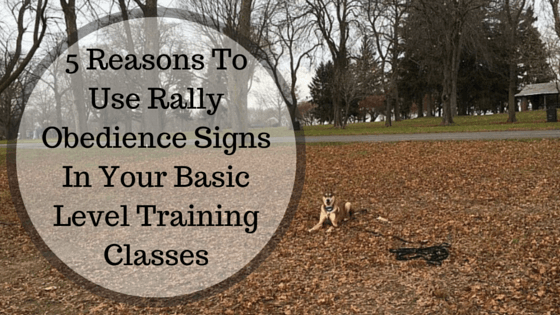
Rally Obedience Signs Can Be Valuable In Any Dog Training Class
No need to reinvent the wheel…there is probably a rally sign for it! Rally obedience signs are not just for Rally-O training and competitions. Rally is a sport designed for handlers and dogs at all stages of training. Utilizing the signs not only works in a basic level class, but also makes sense and has a variety of benefits.
1. Accommodate Visual Learners
Visual learners can SEE what you are asking them to do and may process information better and more efficiently. Addressing and accommodating learning styles in both the handler and the dog will be a benefit to both you and your students. It will make your classes unique and effective.
2. Students Don’t Have To Wait For Further Instructions
It allows for teams to work individually while you are assisting other teams. Setting up signs in your training space with numbers or symbols for your students to follow independently gives you more time to help other teams one-on-one.
3. Choose From A Variety Of Venues
There are several venues of rally obedience; allowing for a visual variety of the same exercise. Check with local competitors and/or clubs to find out what venues of rally obedience are popular in your area. Using several of the locally popular venues gives you and your students variety in class and exposure to dog sports. Below are to signs from five different organizations that offer rally obedience competition:
4. Custom Training In A Group Setting
When teaching rolling enrollment classes, the signs can help you address the different levels of your students. For Fido’s first class, using the “sit” sign gets Fido up and moving and involved right away; for Fido’s next class, using the “sit-walk around (stay)” sign begins the 3-D instruction/training (duration, distance, distraction). While Fido is working on his “sit” and “sit-walk around (stay),” Spot is working on “sit” and “down” and Rover is working on polite leash walking using the pace change signs (“slow,” “fast,” and “normal”). The rally obedience signs are a great way to adjust to each dog’s skill level.
5. Easy Introduction To Students’ Next Possible Class
It may get your students interested in doing something beyond your basic level training class (increasing retention and income). Many students are interested in doing more with their dogs beyond the basic levels, but are not sure how to proceed. Having already seen the rally signs in class will encourage and empower students to continue with their training and strive to do more with their dogs.
Do you use rally obedience signs in your classes?
Recommended Articles:
![10 Things You Didn’t Know About Dog Trainers]()
by Laurie Schlossnagle | Oct 22, 2014 | Business, Training Methods
Open enrollment puppy classes gives clients flexibility and puppies a head start. These classes offer many benefits to all involved – the clients, the puppies, and the instructor(s).

Why You Should Host An Open Enrollment Puppy Class
1) No Waiting To Start Class
Puppies can start as soon as they arrive in the home and have received their required amount of vaccinations. No waiting until the next class starts.
2) Community of Puppy Owners
There are widely varying levels of experience, training, and puppy “issues” in the class – so new puppy families can see that they are not alone and also that there is hope for their puppy. Students also learn from each other.
3) Easy Make Up Policy
If families must miss a class, they can make it up the next time it rolls around. The rolling enrollment model offers far more flexibility with schedules. When coming to class is more flexible, families are more likely to come.
4) Continuous Income
Income from class fees and product sales comes in more steadily and frequently.
5) Stronger Customer Retention
Because the instructor spends more time working one-on-one with each family, they are more likely to continue taking classes with the instructor as their puppy grows up (customer retention).
Implementing an open enrollment puppy class can be challenging (stepping out of a comfort zone), but once it gets up and running, the benefits are huge for all involved.
Recommended Articles










